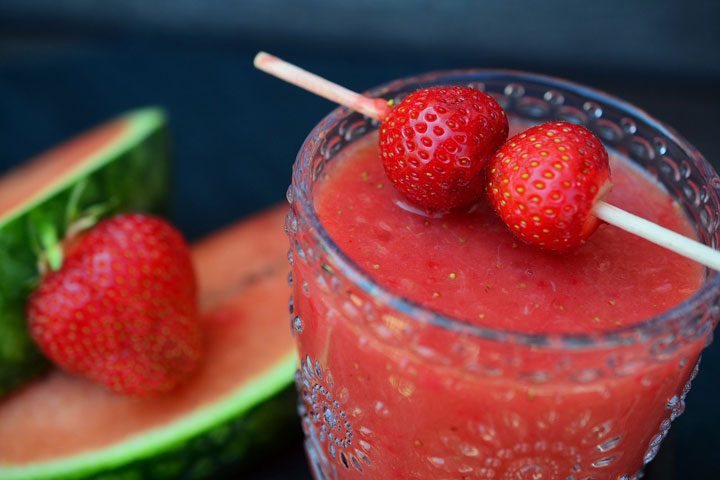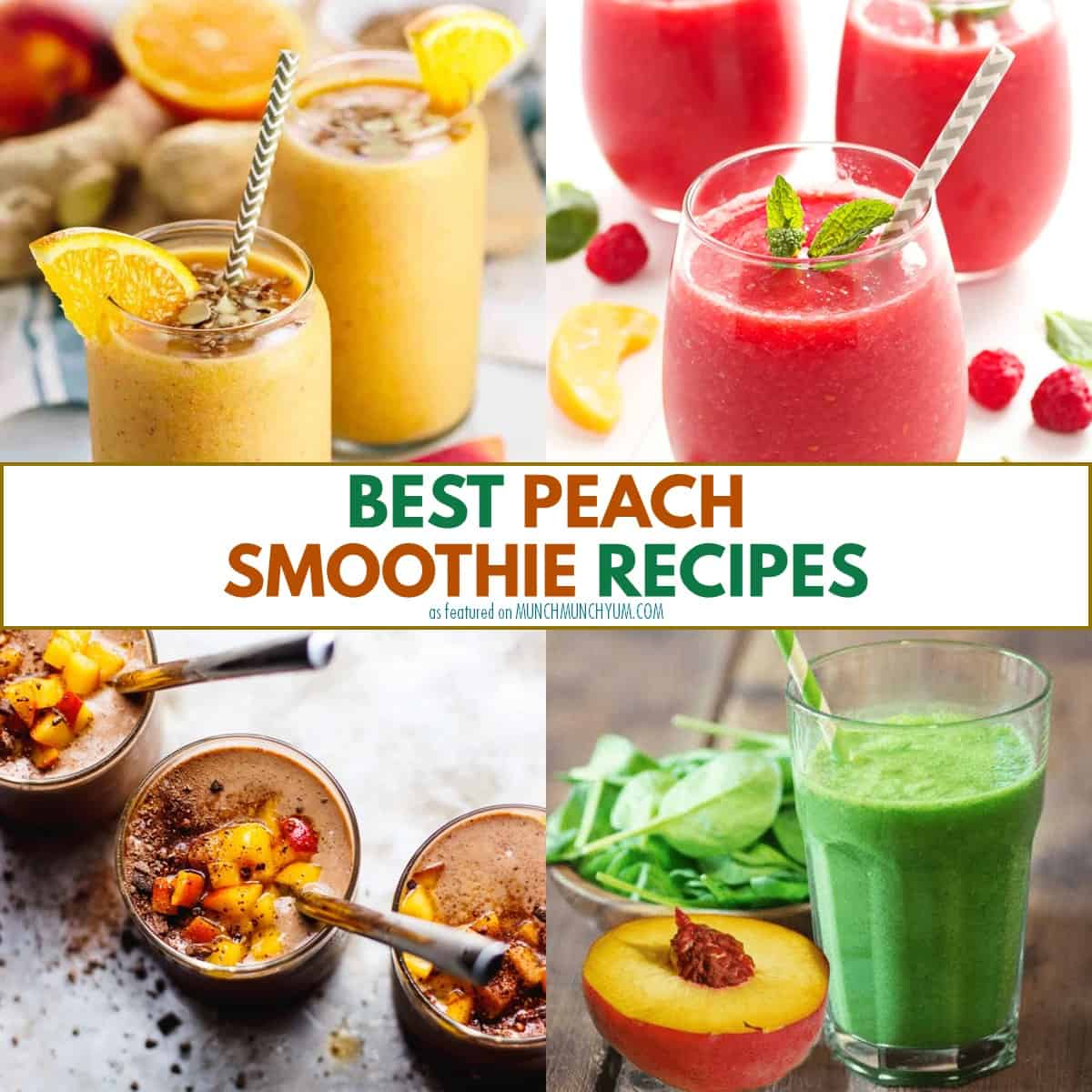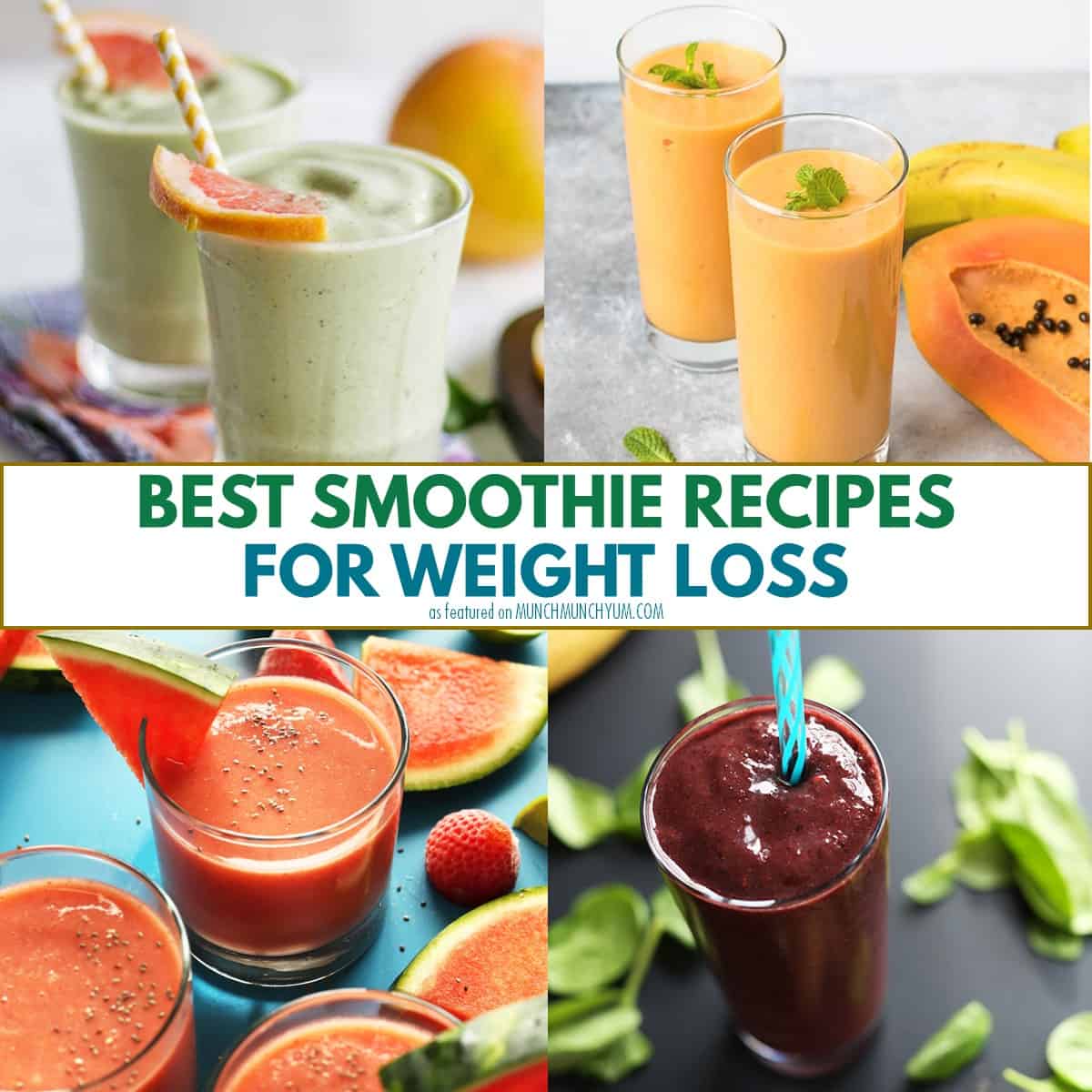Smoothies: the easiest, most versatile meal you can whip up at any time. Learn the basics of how to make smoothies so you can come up with the most delicious concoctions that are great for your health.
Or, if you want to follow tried and true smoothie recipes, we’ve got those too. Enjoy!

Disclosure: Opinions expressed are our own. If you buy something through any of our affiliate links on this page, we may earn a commission at no extra cost to you. Thanks for supporting our site!
Jump to:
- Recommended products & ingredients
- Benefits of smoothies
- What can you put in smoothies?
- How do you make a smooth smoothie?
- How do you blend smoothies?
- Can you make a smoothie in a food processor?
- What can I put in a smoothie to thicken it?
- Is it healthy to have a smoothie for breakfast?
- Can you make smoothies ahead of time?
- How to make smoothies (simple formula)
- Smoothie recipes
- Conclusion
- More Recipes to Try
Recommended products & ingredients
- Top pick for blender* to make your smoothie drinks
- Our go-to non-dairy milk beverage* to add as the liquid base
- Our favorite protein powder* for adding more nutrition to smoothies
Benefits of smoothies
There are so many things to love about smoothies, but here are our top reasons:
- Lots of vitamins and nutrients
- Easy to customize and control nutritional content
- Endless flavor options
- So easy to make that they’re actually kinda hard to mess up
- Vibrant colors make them refreshing to look at and drink up!

What can you put in smoothies?
Virtually anything! There’s isn't much limitation on what you can put in your smoothie, so the beauty of this blended drink is that the combinations are limitless!
To give you some inspiration, though, here are some popular options broken down by food group:
Fruits
- Apple
- Avocado
- Banana
- Blueberry
- Cantaloupe
- Cherry
- Honeydew melon
- Lemon
- Kiwi
- Mango
- Orange
- Papaya
- Peach
- Pear
- Pineapple
- Pomegranate
- Raspberry
- Strawberry
- Watermelon
Vegetables
- Arugula
- Beet greens
- Bok choy
- Carrot
- Celery
- Collard greens
- Cucumber
- Kale
- Spinach
- Spring greens
- Swiss chard
Nuts and seeds
Dairy and beverages
- Almond milk*
- Coconut milk
- Regular or skim milk
- Soy milk*
- Yogurt
- Greek yogurt
Other

How do you make a smooth smoothie?
A tasty smoothie has to have the right consistency, which depends a little on personal preference. Fortunately, adjustments are a breeze.
If your smoothie is too thick, add more liquid. We personally prefer an unsweetened milk beverage over water so that it doesn’t water down the flavor.
If your smoothie is too thin, then add more solid contents. This could be more fresh fruit, nut butters, dairy like yogurt, or even oats.
Your blender can play a factor too. A higher power blender can cut through the frozen fruits and some of the more solid ingredients better, creating the smooth texture you’re looking for.
Also, it helps to start at the low setting then move upward to a higher setting, rather than starting out on high right off the bat.
Check our tips below on how to blend smoothies to get the best results.
How do you blend smoothies?
Your best bet is to get a high-power blender* to make sure your ingredients get thoroughly combined.
It also helps to layer your ingredients strategically. Start with the softest ingredients at the bottom and your hardest ingredients on top.
For example, liquids, yogurts and sweeteners will go into your blender first. Fresh fruits and veggies will go in next. Frozen fruits or ice cubes should be added last, at the top.
You can also blend your drink in stages, which is especially handy for green smoothies so you’re not stuck with leafy chunks (umm, doesn’t that sound yum?).
Add your liquid with the veggies and blend first. Then, add your other ingredients and blend again.

Can you make a smoothie in a food processor?
It’s best to stick with a blender and here’s why: Liquids can leak through the middle of the food processor, which is annoying to clean up.
Blenders are made for liquids, so smoothies and even soups and salad dressings are better made in a blender than food processor.
What can I put in a smoothie to thicken it?
Here are some great options to add to your smoothie that will not only thicken it, but give you extra nutritional value too:
- Frozen fruits
- Freeze some of the liquid, use less liquid, make fruit juice cubes
- Greek or other yogurt
- Tofu
- Nut butter*
- Oats*
- Chia seeds* (they’re good at absorbing liquid)
Is it healthy to have a smoothie for breakfast?
Smoothies can be packed with nutritional value if you put in the right ingredients. And if you add the right mix of healthy fats and proteins as well, it can easily tide you over to your next meal.
Here are some ways to up the healthiness of your smoothie:
- Use fruits that are low in fat and high in nutrients: berries or bananas
- Go with low-fat toppings: berries, chia seeds*, pomegranate seeds
- Choose liquids wisely: fruit juice can be high in sugar, so try plain water or even non-dairy-based liquid (like soymilk*)
- Decrease calories: go with milk alternatives (like almond milk*), or Greek yogurt over regular yogurt
- Add protein powder* to thicken the smoothie, boost your energy and metabolism, and help your muscles recover after a good workout

Can you make smoothies ahead of time?
Making smoothies ahead of time is possible, but it won't be as pretty or nutrient-rich as when it's freshly made.
If time is your concern, you can definitely prep and portion ingredients ahead of time. Use ziploc bags to pre-portion your ingredients, and pop them in the blender when you’re ready to make your smoothie.
For those that are really intent on having the smoothies fully made ahead of time, you can do so and keep them in the fridge for 2 to 3 days.
Alternatively, you can also freeze them immediately after blending, but you'll have to remember to defrost them before they're ready to consume.
How to make smoothies (simple formula)
1. Start with fruits and veggies. Use frozen as that adds thickness and a refreshing temperature. The sweetness of the fruits is what people love about smoothies, so pick your favorites. Don’t be afraid to mix and match.
2. Choose a base of liquid. This will help your blender to break down the ingredients.
3. Add a thickening ingredient. These are usually sources of protein like yogurt, protein powder*, or nut butters* to give your smoothie that satisfyingly thick consistency.
4. Flavor with sweeteners and other toppings. This step is totally optional, but you can add more depth to your smoothie with maple syrup*, vanilla extract*, cinnamon*, and even herbs.
For toppings, you have lots of options if you’re looking for substance or crunch, such as by adding freshly sliced fruits, nuts or seeds, bee pollen*, or powders like maca*, acai*, cacao*, or spirulina*.
Smoothie recipes
We have all kinds of smoothie ideas which are bound to fit your dietary preferences, sorted by type of ingredient or function.
In each article, you can find various smoothies such as:
- with or without yogurt
- with or without milk in case you prefer a dairy-free or vegan smoothie
- low-carb options if you’re watching your sugar or following a diet like keto
- and much more!
Healthy fruit smoothie recipes
Try these fresh fruit smoothies that use your favorite seasonal produce to create a sweet drink.
Healthy smoothies
Create smoothies that pack lots of nutrients to give your body the fuel it needs to function optimally.
Other fun smoothie ideas
Give these other creative concoctions a whirl (get it?) that add unique flavors and textures to your smoothie repertoire.
Conclusion
This ultimate guide on smoothies teaches you everything you need to know to learn how to make smoothies. We’ve even found best smoothie recipes that taste good and are good for your body. Take this quick breakfast meal for a spin in your blender!
More Recipes to Try
See all desserts, treats recipes →



























Leave a Reply